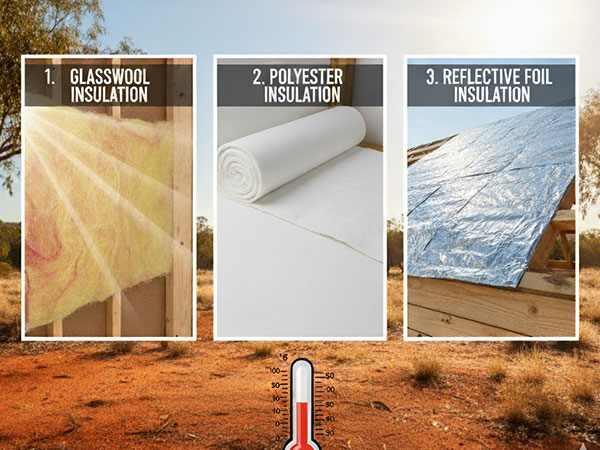
Australian summers are no joke, and in Melbourne, the combination of dry heat and scorching afternoons can quickly turn homes into ovens. While many people think insulation is only for keeping warm in winter, it’s just as effective at keeping homes cool in summer.
By slowing down the transfer of heat, insulation helps create a comfortable indoor environment, reduces reliance on air conditioning, and cuts down on energy bills. However, not all insulation materials perform equally well in hot conditions.
Here, we’ll explore the top 3 insulation materials that stand up best to Aussie summer heat, and why OZ Homes Insulation is the trusted choice to install them in your home.
On a 35°C Melbourne day, the roof cavity in a brick veneer home can reach more than 60°C. Without proper insulation, that heat quickly transfers into living areas, forcing your air conditioner to work overtime.
Insulation acts as a barrier to heat flow. It reduces conduction (heat moving through solid materials), convection (warm air circulating through gaps), and in the case of reflective foil, radiation (sun’s radiant heat entering through the roof).
The result? A home that stays cooler for longer, lower cooling costs, and a big step towards energy efficiency that meets Australian Standards (AS/NZS 4859.1) for thermal performance.
What it is:
Glasswool (also called fibreglass insulation) is made from recycled glass spun into fine fibres. Products like Earthwool are widely used in Australian homes.
Why it works in summer:
Glasswool has excellent thermal resistance (R-Value), meaning it slows heat transfer effectively. It’s ideal for Melbourne roofs and walls, where most summer heat enters.
Pros:
Cons:
Needs professional installation for safety and effectiveness
Best used:
Roofs and external walls in both new builds and retrofits.
Case in point: OZ Homes Insulation recently upgraded a family home in Werribee with Earthwool ceiling batts, reducing the client’s cooling bills by almost 30% during their first summer.
What it is:
Polyester insulation is made from synthetic fibres, often containing a high percentage of recycled plastic.
Why it works in summer:
Polyester has excellent thermal properties, providing stable indoor temperatures in hot conditions. It also reduces draughts and works especially well under suspended timber floors, where hot air can seep in.
Pros:
Cons:
Best used:
Underfloor insulation and walls in homes where comfort and air quality are priorities.
Example: In Brighton, OZ Homes Insulation fitted polyester underfloor batts in a period home, creating a cooler, draught-free environment perfect for summer living.
What it is:
Also known as sarking or foil board, reflective foil is designed to reflect radiant heat away from the home.
Why it works in summer:
Unlike bulk insulation, foil doesn’t rely on thickness, it reflects up to 95% of radiant heat. When combined with glasswool or polyester, it provides superior summer performance.
Pros:
Cons:
Best used:
Roof spaces, especially in homes exposed to western or northern sun.
In Point Cook, OZ Homes Insulation combined foil sarking with Earthwool ceiling batts, creating a high-performance barrier that kept the top-storey bedrooms significantly cooler during summer.
For eco-conscious homeowners, materials like sheep’s wool or cellulose provide sustainable insulation options. While effective, they’re less commonly used due to higher costs and limited availability
The best insulation for your home depends on several factors:
The right solution often involves a combination of materials. For example, foil plus glasswool in the roof delivers exceptional summer comfort.
That’s where OZ Homes Insulation comes in. We’ll assess your home and recommend the most effective, compliant, and affordable solution for your lifestyle.
At OZ Homes Insulation, we pride ourselves on helping Melbourne homeowners prepare for summer with the right products and expert installation.
We’re locals, so we understand how Melbourne’s summers impact homes from inner-city terraces to large suburban houses.
Get a free quote today and beat the heat before it arrives.
Contact OZ Homes Insulation today for expert advice and a free, no-obligation quote. Let’s make your home summer-ready, the smart way.
Quick Quote
Our team are well placed to advise you on the right insulation products for your construction project.
Our team are well placed to advise you on the right insulation products for your construction project.
Dear Valued Customer,
Thank you for visiting Oz Homes Insulation, we will finish trading for the year at 5:00pm Monday 18th December 2023 and re-open for business on Monday 15ndJanuary 2024
Our phone will not be attended during these times so please email through all enquires via our email or simply fill out our call back form with your enquire and will get back to you as soon as possible.